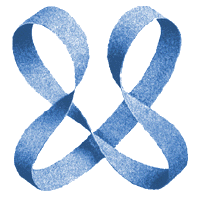
Laws of Media
Learning is about learning to ask the right questions. - unknown
The Laws of Media are four questions that help us understand the effect of any artifact on our culture, on us. The answers form a tetrad.
- Enhances: What does enhance or intesify?
- Obsolesces: What does it render obsolete or displace?
- Retrieves: What does it retrieve that had been previously obsolesced?
- Reverses: What does it produce or become when pressed to an extreme?
LM p. 7
- Enhances: What does the artefact enhance or intesify or make possible or accelerate?
- Obsolesces: If some aspect of a situation is enlarged or enhanced, simultaneously the old condition or unenhanced situation is displaced thereby. What pushed aside or obsolesced by the new 'organ'?
- Retrieves: What recurrence or retrieval or earlier actions or services is brought into play simultaneously by the new form? What older, previously obsolesced ground is brought back and inheres the new form?
- Reverses: When pushed to the limits of its potential (another complementary action), the new form will tend to reverse what had been its original characteristics. What is the reversal potential of the new form?
LM p. 98-99
- Enhances: What does any artifact enlarge or enhance?
- Obsolesces: What does it erode or obsolesce?
- Retrieves: What does it retrieve that had been previously obsolesced?
- Reverses: What does it reverse or flip into when pushed to the limits of its potential (chiasmus)?
GV p. 9
- Enhances: What does the technology amplify, enlarge or enhance?
- Obsolesces: What does it obsolesce?
- Retrieves: What does it retrieve or bring back from a distant past? (Probably something that was scrapped earlier.)
- Reverses: What does it flip or suddenly reverse into when pushed to its limits?
UnderMe p. 287
- Enhances: every new medium extends a human property
- Obsolesces: obsolesces the previous medium by turning it into a sport or an form of art
- Retrieves: retrieves a much older medium that was obsolesced before
- Reverses: flips or reverses its properties into the opposite effect when pushed to its limits
Interview with Derrick de Kerckhove undated
- Enhances: What does it amplify or enhance? (inflating, amplifying, or playing up)
- Obsolesces: What does it erode, replace, or obsolesce? (down playing, impeding, numbing, or pushing aside )
- Retrieves: What do it revive or retrieve of similar nature previously obsolesced? (replaying, reviving, bringing back)
- Reverses: What does it flip into when pushed to extremes? (chiasmus, reversing, or flipping into)
Barrington Nevitt WIMM p.263-4
| Laws of Media | Laws of Media | Global Village | Understand Me | Derrick de Kerckhove | Barrington Nevitt |
Perhaps an example of Refrigerator from "Laws of Media" will make this understandable. There is also an explanation of each question as well as an explanation of how they relate and can be tuned or polished.
Why are the Laws of Media important?
The Laws of Media themselves are a tool for probing the effects of artefacts. They are important because these laws apply to all artefacts, not just what we now consider media. "As an exploratory probe, tetrads do not rest on a theory but a set of questions; they rely on emperical observation and are thus testable. When applied to new technologies or artifacts, they afford the user perdictive power; in this sense as well they may be viewed as a scientific instrument." GV, p. 6
"[T]etrads are a means of focusing awareness of hidden or unobserved qualities in our culture or technology...." LM p. 128
"The laws of media in tetrad form belong properly to rhetoric and grammar, not philosophy. Our concern is etymology and exegesis. This is to place the modern study of technology and artefacts on a humanistic and linguistic basis for the first time."LM p. 128
[insert quote about pace of change]
Updated: Update-Goes-Here